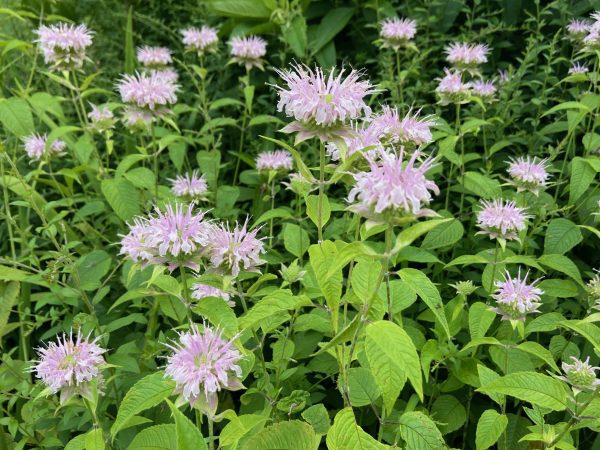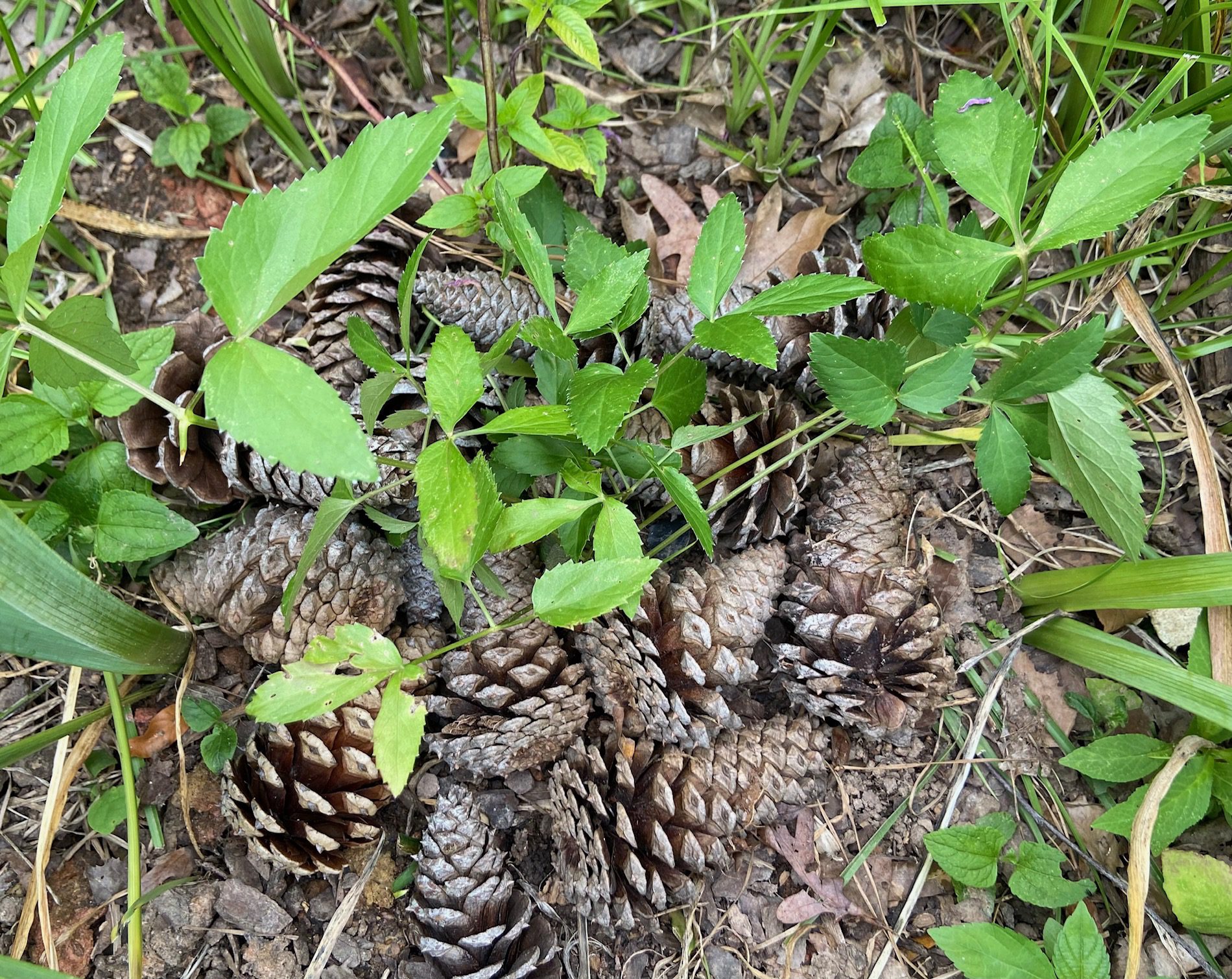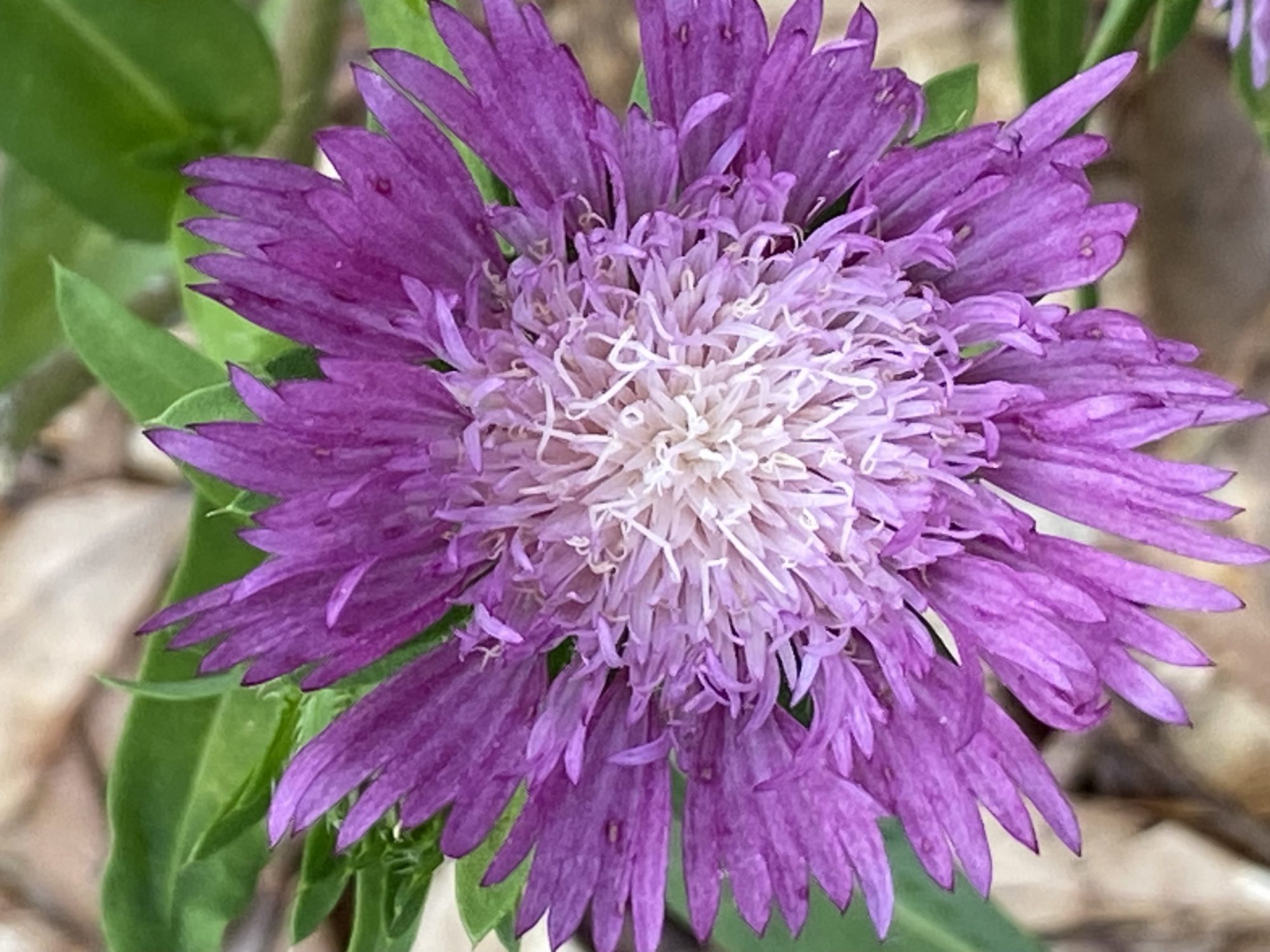When Rabbits Decide

We gardeners are always striving for an ideal vision, the moment when our creations will finally reach their full, mature potential. And we foolishly assume that once they’ve attained it, they’ll then remain in that state of perfection. But gardens aren’t static. They’re always in flux. Plants don’t perform as promised. We make poor choices. Conditions change. A tree grows and casts more shade. Its roots spread and siphon moisture. A large tree topples and suddenly admits a shaft of scorching sunlight.
And then there’s rabbit predation, which I first wrote about last winter (Too much of a good thing: Bunny boom | UNC Charlotte Urban Institute | UNC Charlotte). By now, I’d hoped we might be heading toward a trough in the rabbit’s natural boom and bust cycle, but I haven’t seen any significant decline. My neighbor’s son recently compared my yard to Mr. McGregor’s Garden. While the damage can be disappointing – not to mention irritating and frustrating – it has pushed me to embrace a Zen-like perspective. I’ve begun to see the changes as an opportunity to rethink and refine my vision.
Now, every time I consider a plant and its placement, I add potential rabbit predation to my long list of calculations about site conditions and aesthetic considerations such as bloom time, color, texture and form.
I’ve come to accept that rabbits will decimate any threadleaf ironweed in the backyard, but for some reason they go easy on the ones in the front. The diminutive Ohio spiderwort gets nibbled to oblivion, but their larger, coarser cousins can generally withstand some browsing. The rabbits cut entire stalks of cardinal flower, but they do no more than strip the bottom leaves off the related giant blue lobelia. They gorge on Carolina phlox, but they’ve never even tried a bite of a nearby cultivar. That one is truly perplexing for me, but who can ever truly know the mind of a rabbit? Even some shrubs have fallen victim to their nibbles – blueberries, New Jersey tea and Zenobia have all succumbed. For shrubs, it’s the death by a thousand cuts.
I’ve learned to make accommodations to protect some of my treasured plants. This spring, I tried a technique I learned from Anne Spafford, a professor of horticulture at N.C. State University, during a Wing Haven webinar. She observed that bunnies have tender feet; they don’t like to step on prickly things. She advised using pine cones to deter them. Back in early spring, when the tender bloom stalks of my golden alexander kept getting nipped before they could flower, I surrounded it with an artful arrangement of cones from my neighbor’s towering loblolly pine. It worked! Encouraged, I cut stray whips from my ungainly swamp rose and placed the trimmings around my beleaguered asters as they began to emerge. Voila! I’m now cautiously optimistic about seeing them flower again this fall for the first time in at least three or four years.

With a small, newly planted shrub – especially the ones that aren’t easily replaced – I resort to cutting the bottom out of the plastic pot it came in, then I slip the cylinder over the plant until it gets established. It isn’t attractive, but it has been successful, most recently on a St. John’s wort. In less critical situations – with perennials that won’t be killed outright or permanently disfigured – I use a length of black plastic mesh, which is much less conspicuous. I kept it around my Carolina phlox throughout the winter, and there was only a brief period after my spring cleanup when it wasn’t obscured by the foliage of surrounding plants.
In fact, I’ve found that tucking vulnerable species into a dense stand of less appealing plants can help deter the bunnies. I recently thinned a stand of native iris and have tried interspersing them with cardinal flower and golden alexander. So far, so good. I’m also learning that rabbits don’t seem to care for plants with fragrant foliage, so I’m leaning into members of the mint family. I’ve recently added more bee balm and narrowleaf mountain mint, placing them near some of my most vulnerable plants.
And maybe best of all, I’ve been inspired to try some wonderful new plants I hadn’t previously embraced.
Hello, Robin’s plantain! Hello, Stokes aster! Hello, downy woodmint! Where have you been all my life?

For an avid gardener, the thrill of trying something new is perhaps even more intoxicating than the yearning to achieve an ideal vision. When I think about it, perhaps I ought to thank those rascally rabbits for forcing me to expand my horizons and allowing me to indulge my plant addiction.